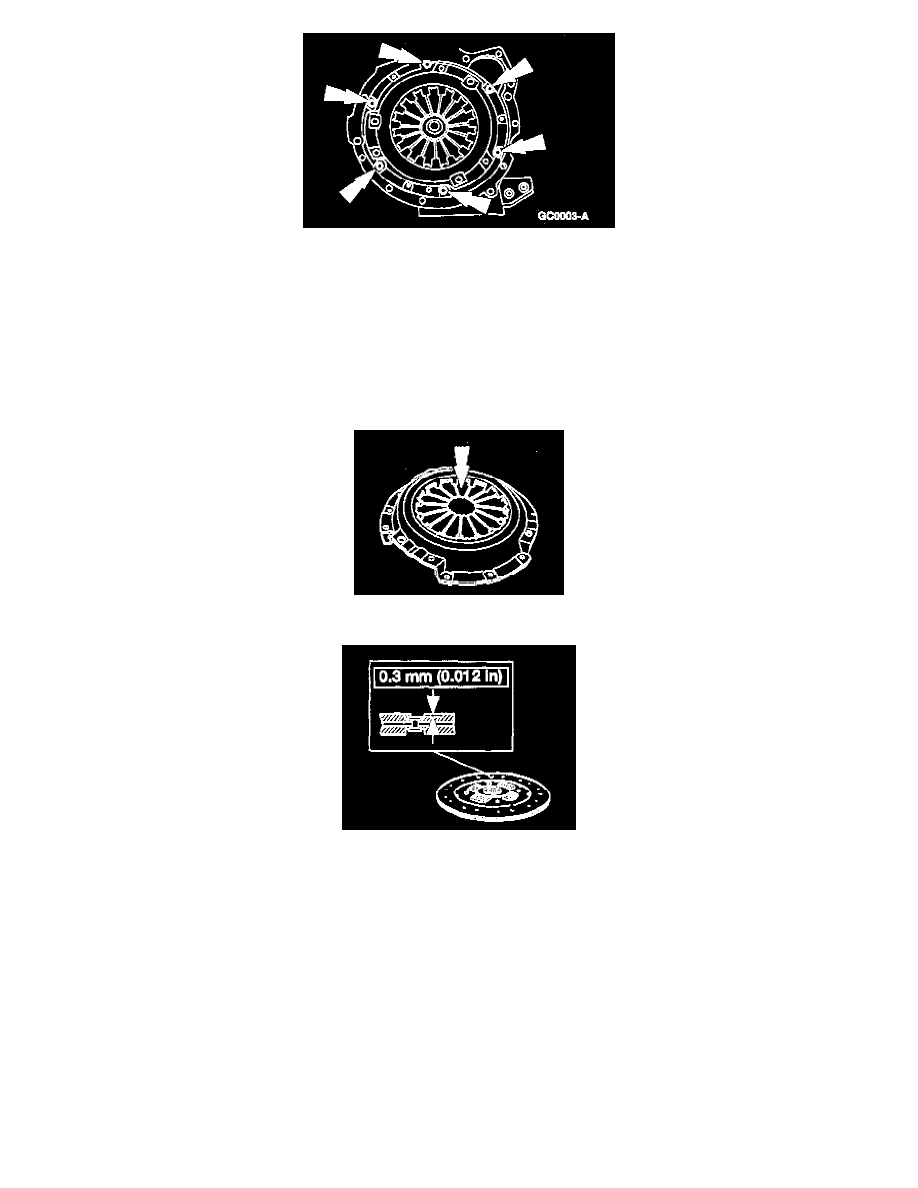Escort L4-122 2.0L SOHC VIN P SFI (1999)

3. CAUTION: Loosen bolts evenly to prevent pressure plate damage.
Note: If the parts are to be reused, mark the clutch pressure plate and flywheel.
Remove the bolts and remove the clutch pressure plate and clutch disc.
4. CAUTION: Do not use cleaners with a petroleum base and do not immerse the clutch pressure plate in solvent.
Use a suitable commercial alcohol base solvent and clean the clutch pressure plate.
5. Inspect the clutch pressure plate surface for bum marks, scores, flatness or ridges.
6. Inspect the clutch pressure plate diaphragm fingers for wear. Replace the clutch pressure plate if necessary.
7. Use a slide caliper and measure the depth to the rivet heads. Replace the clutch disc if any rivet head measurement is not within specifications.
8. CAUTION: If the clutch disc is saturated with oil, inspect the rear engine crankshaft seal for leakage. If leakage is found, replacement of
the seal is required prior to clutch disc replacement.
Note: Use an emery cloth to remove minor imperfections in the clutch disc lining surface.
Inspect the clutch disc for:
-
Oil or grease saturation.
-
Worn or loose facings.
-
Warpage or loose rivets at the hub.
-
Loose or broken torsion dampening springs.
-
Wear or rust on splines.
-
Replace the clutch disc if any of these conditions are present.
